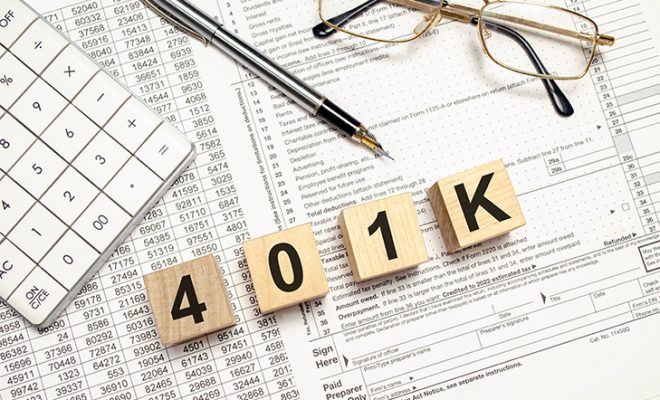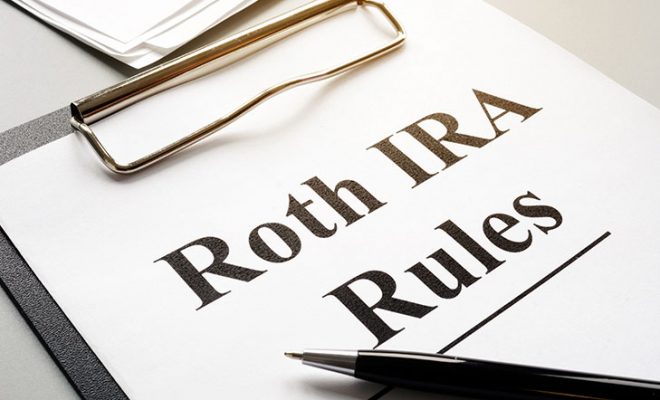Key Changes in 2024 IRS Retirement Plan Limits and its Impact

Retirement planning is a dynamic and ongoing process that requires careful consideration and periodic adjustments. Shifts in your income, alterations in your professional life, fluctuations in inflation rates, and the unpredictable nature of market conditions must be accounted for when planning for your future. Retirement accounts such as 401(k), 403(b)/457(b), Health Savings Accounts (HSA), Individual Retirement Accounts (IRA), and others play a pivotal role in enabling you to save for your post-employment years. As 2023 draws close, the Internal Revenue Service (IRS) has unveiled significant changes to the rules and regulations governing key retirement accounts. These adjustments are set to take effect in the coming year of 2024. The IRS has announced alterations to contribution limits and other essential aspects of retirement planning. Understanding the implications of these modifications is necessary to build a secure financial foundation for your retirement years.
A financial advisor can help you understand the new IRS limits for 2024 and how they impact you. This article also aims to shed light on the key IRS retirement plan limits for 2024 and explore the impact these adjustments may have on your retirement planning strategy.
What are the main changes in IRS limits for 2024?
Here is a list of the new rules announced by the IRS that may affect you in 2024:
1. Change in contribution limits for 401(k)/403(b)/457(b) elective deferrals
The IRS has revised the contribution limits for 401(k), 403(b), and 457(b) plans in 2024. Previously, the maximum annual contribution stood at $22,500 as of 2023. The 401(k) 2024 contribution limit set by the IRS will be increased to $23,000. This adjustment will also affect 403 (b) and 457(b) plans. There is no change in the limit for catch-up contributions. In 2023, the catch-up limit was $7,500 and will be the same for 2024. So, with catch-up contributions, individuals aged 50 and older can contribute up to $30,500 annually to their 401(k) in 2024.
- Impact on investors: Investors will now have the opportunity to contribute more to their retirement accounts and potentially increase their long-term savings. This change may allow you to boost your retirement nest egg and take advantage of additional tax benefits.
2. Change in employer contributions for a 401(k)
Employer-sponsored plans, like the 401(k), benefit from matching contributions from employers. This match is added from the employer on top of the employee contribution. Usually, companies match a percentage of the employee’s contribution. For example, the company may contribute 50% of the contribution. This means for every $1 you invest in your 401(k), your employer will contribute 50 cents. The combined annual limit for employee and employer contributions was $66,000 (or 100% of employee compensation, whichever is less) for individuals under 50 in 2023. The limit was increased to $73,500 with catch-up contributions for participants aged 50 and over in 2023. In 2024, this limit will increase to $69,000 for those under 50 and $76,500 for individuals aged 50 and over who make catch-up contributions.
- Impact on investors: Employees may receive higher matching contributions from employers, which can lead to accelerated growth of their retirement savings. This change may also encourage participation in employer-sponsored plans, as the increased limit will allow investors to maximize the benefits of employer matches.
3. Change in contribution limits for IRAs
There have been changes to the contribution limits for Roth and Traditional IRAs for the tax year 2024. For individuals below the age of 50, the contribution limit has increased from $6,500 in 2023 to $7,000 in 2024. Similarly, for individuals aged 50 and above, the limit has risen from $7,500 in 2023 to $8,000 in 2024. These individuals can contribute an extra $1,000 in catch-up contributions. It is important to note that there is no change in the catch-up contribution limit for the following year.
- Impact on investors: IRA contributors can now invest more annually and potentially accumulate more wealth over time. This can be particularly beneficial for employees who do not have access to a 401(k).
4. Changes in contribution limits for SIMPLE plans
Savings Incentive Match Plan for Employees (SIMPLE) plans are a type of retirement savings account plan that small businesses with a strength of 100 or fewer employees use to save for their golden years. Employers who offer SIMPLE plans can opt for a non-elective contribution equivalent to 2% of the employee’s salary or choose a dollar-for-dollar matching contribution. With the latter, the matching employee contributions can be up to 3% of the employee’s salary.
2024 retirement plan contribution limits for SIMPLE plans have been revised. For the year 2024, the maximum amount an employee can defer into a SIMPLE plan sees an increase. As of 2023, the limit stood at $15,500. However, in 2024, employees can contribute up to $16,000 to their SIMPLE plans. The catch-up contribution allowance for SIMPLE plans remains constant between 2023 and 2024. Employees aged 50 and older can contribute an additional $3,500 in catch-up contributions. This provision remains at the same level as in the previous year.
- Impact on investors: Individuals using SIMPLE plans can now contribute more and enhance their ability to save for retirement. The increased limit can support small business employees in building a more substantial retirement fund and contribute to financial security in their later years.
5. New compensation limit for SEP IRA
A Simplified Employee Pension (SEP) IRA operates similarly to a traditional IRA. It adheres to the same investment, distribution, and rollover regulations. This account is specifically designed for business owners and offers them the ability to contribute to both their own and their employee’s retirement savings. The compensation used to determine SEP contributions can include a broad range of income sources, such as wages, salaries, overtime, tips, commissions, bonuses, vacation and sick pay, and other forms of remuneration received from the employer. However, there are limits on the compensation considered for SEP contributions.
In 2023, this limit is set at $330,000, and for the year 2024, it increases to $345,000. These limits ensure that SEP contributions are calculated based on a proportion of an employee’s income.
- Impact on investors: Business owners and employees with SEP IRAs may see increased contributions. The higher compensation limit allows for larger retirement account balances in 2024.
SPONSORED WISERADVISOR
6. New limits for defined benefit plans
Defined benefit plans are structured to provide a specified benefit upon retirement. In a defined-benefit plan, the employer assumes the responsibility for providing a specified maturity benefit to employees upon retirement. These plans offer a fixed, regular income during retirement, often in the form of a monthly pension. The annual benefit limits for defined benefit plans under Section 415(b) have also experienced an upward adjustment. In 2023, the maximum yearly benefit was capped at $265,000, and for 2024, this limit has been raised to $275,000.
- Impact on investors: Individuals participating in defined benefit plans may see increased annual benefits with higher contributions. This can enable them to save more during retirement.
7. Compensation limits in retirement plans
The annual compensation of participants plays a crucial role in determining various aspects, such as employer contributions and individual deferrals. The IRS sets a yearly compensation limit, outlined in Section 401(a)(17), to regulate these contributions. In the year 2023, the maximum annual compensation that could be considered for determining a participant’s allocation of employer contributions and individual deferrals was set at $330,000. For the year 2024, the IRS has adjusted the annual compensation limit to $345,000. This means that in this year, the maximum compensation taken into account for calculating contributions must not exceed $345,000. The annual compensation limit is a critical factor in establishing how much an individual can contribute to their retirement plan, as well as the maximum amount that can be considered for employer contributions. Individuals contributing to retirement plans need to be aware of the annual compensation limit, especially if their income approaches or exceeds the set threshold. Contributions exceeding the limit may face tax implications.
- Impact on investors: Investors approaching or exceeding the annual compensation limit should exercise caution, as contributions exceeding the limit may have tax implications. With this change in place, investors will need to manage their contributions within the specified limits to avoid potential financial setbacks.
8. Highly compensated employee definition
Tax-deferred retirement plans, such as 401(k) plans, have been instrumental in helping employees with retirement savings. These plans were initially designed to provide equal benefits to all workers. However, they have encountered challenges related to contribution disparities among employees. To rectify this issue, the IRS introduced measures to limit contributions by high earners. In the early stages, employees were allowed to contribute unrestricted amounts with the employer’s matching contributions. This unrestrained contribution resulted in high earners contributing significantly more to their retirement accounts. As a result, they could also avail themselves of a higher tax deduction than those earning less. The IRS imposed limits on the amount of contributions made by high earners to put an end to this imbalance in contribution benefits.
An individual is classified as a Highly Compensated Employee (HCE) if they own more than 5% of the business at any time during the year or the preceding year, irrespective of their compensation. In the 2023 tax year, an individual was considered an HCE if they received more than $150,000 in compensation and ranked in the company’s top 20% in pay. In the 2024 tax year, this compensation threshold increases to $155,000 under Section 414(q).
- Impact on investors: High earners may face limitations on their contributions, which can impact their retirement savings strategy. With this change in place, high-income groups may benefit from including other assets in their portfolio apart from their 401(k)s.
9. Key employees officer compensation for top-heavy 401(k) plans
The IRS limits for 401(k) in 2024 have also changed for top-heavy plans. A 401(k) plan is considered to be top-heavy if, as of the last day of the previous plan year, the total value of plan accounts for key employees surpasses 60% of the total value of plan assets. If a 401(k) plan is identified as top-heavy, the employer is obligated to contribute up to 3% of the compensation for all non-key employees who remain employed on the last day of the plan year. Contributions made under this requirement are subject to a vesting schedule. Participants must be 100% vested after three years of service or follow a graded schedule as below:
- 20% after two years
- 40% after three years
- 60% after four years
- 80% after five years
- 100% after six years
Any employee serving as an officer with compensation exceeding a certain threshold is deemed to be a key employee. In 2023, this limit was $215,000 and has been increased to $220,000 for 2024. In addition to this, individuals who own more than 5% of the business are classified as key employees. An employee owning more than 1% of the company and earning over $150,000 during the plan year is also categorized as a key employee. The top-heavy rules are in place to protect the interests of lower-paid employees and ensure they receive a minimum benefit even in plans where key employees hold a significant share of plan assets.
- Impact on investors: Key employees may face increased scrutiny and regulations regarding their compensation in top-heavy 401(k) plans in 2024.
10. ESOP limit
An Employee Stock Ownership Plan (ESOP) is an employee benefit plan designed to offer workers an ownership stake in the company through stock ownership. ESOPs allocate ownership interest to employees in the form of company shares and contribute to a sense of shared responsibility and engagement among employees. Employees may receive distributions from their ESOP accounts for up to five years, subject to the maximum account balance limit. For 2023, the ESOP limit for determining the maximum account balance subject to the 5-year distribution limit was set at $1,330,000. For 2024, the limit is adjusted to $1,380,000. This value represents the maximum account balance that is subject to the 5-year distribution limit.
The dollar amount for determining the lengthening of the five-year distribution period has also been increased. The figure was set at $265,000 in 2023 but has now been raised to $275,000 for 2024. This change signifies the dollar amount used as a threshold for determining when the five-year distribution period may be extended. If your account balance exceeds this threshold, the distribution period may extend beyond five years.
- Impact on investors: Employees participating in ESOPs may experience changes in the distribution period and account balance limits. This alteration could affect the timing and amount of distributions and influence the financial planning of individuals relying on ESOPs for their retirement savings.
To conclude
Acquainting yourself with the details of 2024 retirement plan contribution limits can help you proactively align your financial goals with the evolving nature of retirement plan regulations. The critical changes in IRS retirement plan limits can affect your retirement planning strategy and push you to replan your contribution, withdrawal, and tax plan. With most plans witnessing a noteworthy increase, you can contribute more in 2024 and reach your retirement goals sooner. You can also consult a financial advisor for help in understanding the impact of these changes on your individual goals.
Use the free advisor match service to get matched with vetted advisors who can help you understand how the new rules affect your retirement planning strategy. Answer a few simple questions based on your financial needs, and the match tool can help connect you with 1 to 3 financial advisors who are best suited to help you.










